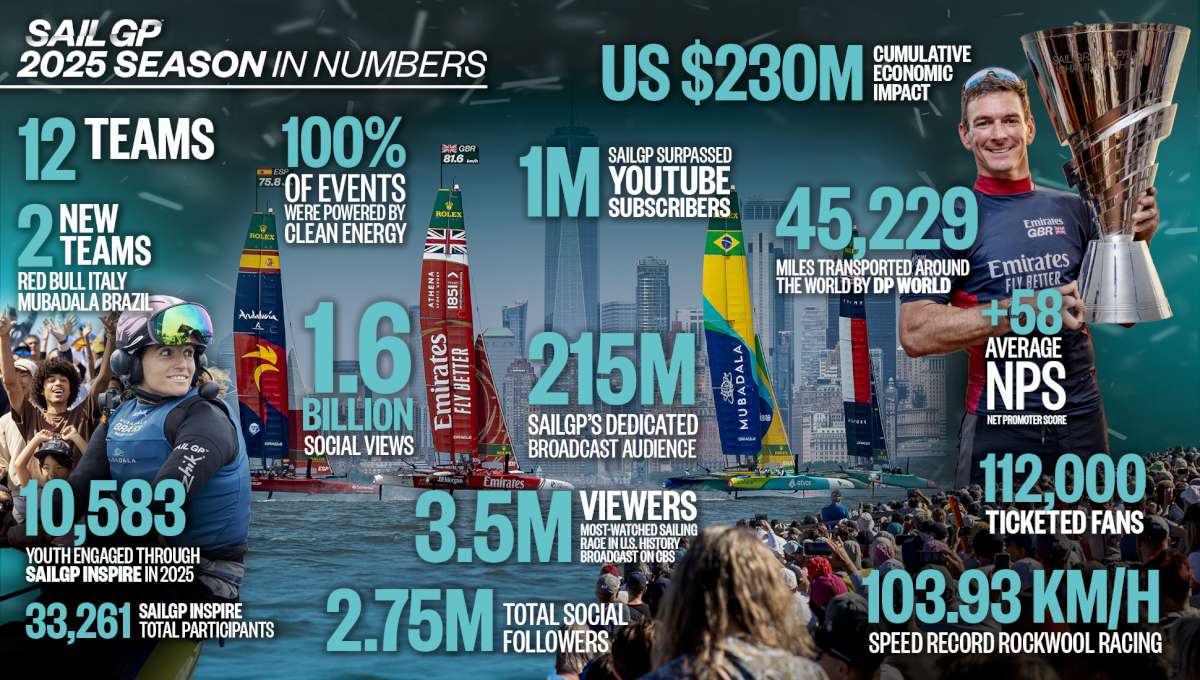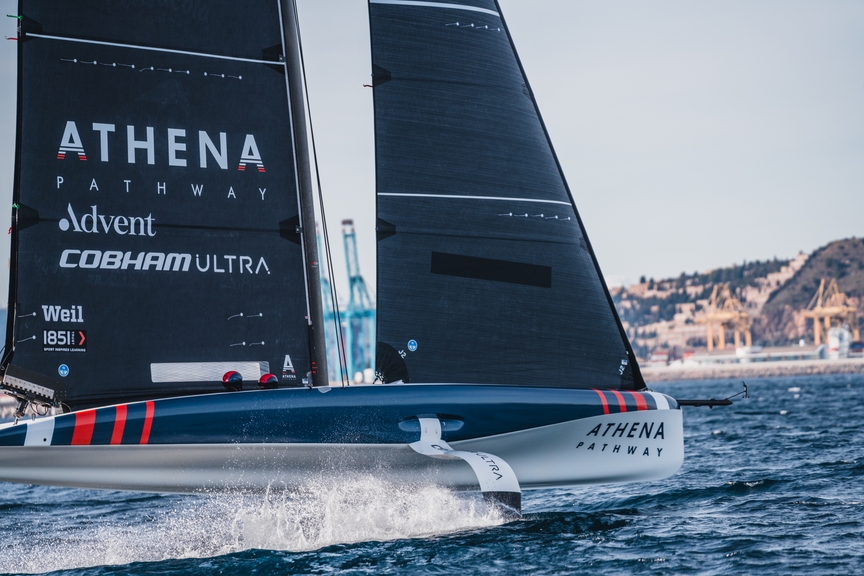Island honeymoon
Heading off into the unknown with a few friends and 50 or so complete strangers on a sailing regatta is perhaps not everyone’s idea of a romantic honeymoon, reports Traci Ayris.
Tonga’s Kalia Cup Rally in July suited us fine. My boyfriend, David, and I had made the decision to charter a yacht in the Rally with three close friends 12 months earlier, but I hadn’t factored in his surprise engagement and our April wedding. The lure of having a ‘South Pacific honeymoon’ however, was so appealing that we simply decided to take first dibs on the main cabin, throw in a few celebratory bottles of South Australia’s finest and call it our ‘delayed’ honeymoon.
Our trip began by joining up with the aforementioned people, but it wasn’t easy to pick them, the Mariner Boating Holidays group, scattered along the Pacific Blue check-in line at Sydney. We were a disparate bunch of school-age to pension-age strangers; the only common ground being that we were all about to head off and sail around a remote Southwest Pacific archipelago.
After landing, our first shared experience was arriving in Nuku’alofa, the capital of Tonga on the main island of Tongatapu. In the wee small hours, we found no shiny international airport here. Instead, a concrete hall with third-rate amenities and officials who acted as if we had personally roused them from their sleep to stamp our passports. We wondered where all the friendly people were.
Because of its proximity to the International Dateline, Tonga has variously been described as the country ‘where time begins’ or ‘where time ends’. Others may say it’s a place where time stands still. Everything we witnessed on our trip underlined my own theory that in Tonga, time is simply immaterial. Tongan folk are by nature a gentle and friendly race. There are definable social ‘levels’ within their society but, with the exception of nobility or through ‘special favour’, no one actually owns their patch of Tongan soil. Instead, most live as tenants and pay tributes in varying forms. The reassurance of always having land to farm and somewhere to live has resulted in a ‘collective’ Tongan culture where crime is rare, honesty esteemed and Christian morals highly valued. Often considered arrogant and assertive by their Polynesian neighbours, Tongans consider themselves fiercely independent and proud. One possible explanation is that their country is the only South Pacific nation never to have been colonised, but we saw no hint of such superiority during our stay. We were greeted by wide smiles and a wave wherever we went, often accompanied by a sing-song ‘Malo e lei lei!’(hello). Soft and lilting, the Tongan language is easy to learn and interestingly contains many words beginning with ‘Fak’, thus, the name of our committee boat ‘Fak’e-ha-ha’ was eventually simplified to ‘committee boat’ to curb the likelihood of offensive remarks over the VHF.
A few months earlier I had read Tony Horovitz’s excellent book ‘Into The Blue’ where he and his colourful travelling companion (a dry laconic Aussie) follow in the steps of Captain Cook, enjoying a fine romp through the South Pacific along the way. The chapter about Tonga, in particular, was stuck in my mind; Horovitz described a particularly paradoxical place so I was eager see the ‘Friendly Archipelago’ of Cook’s travels for myself. The legendary sea captain first visited in 1773, apparently dropped in again a year later and made plans to return yet again. When he did so in 1777, he dallied in Tonga for more than two months, a long time indeed by his standards. In Cook’s day, the women were ‘obliging’ and ‘welcoming’ (hence his name for the island group) and reading between the lines it wasn’t hard to understand why his men were more than happy to stay and play among the coconut palms. The arrival of western missionaries 20 years later apparently put paid to such behaviour to the point where today Tonga is one of the most highly Christian countries on earth.
Our overnight sojourn at the International Dateline Hotel was forgettable. Hopefully, the completion of a new hotel near the main airport later this year will lift Tonga’s accommodation levels to a more western standard. Tourism in Tonga is underdeveloped which means that while thronging crowds of tourists are refreshingly rare, so too are western-standard facilities. As most hotels and resorts cater for ‘activity travellers’ such as scuba divers and yachties, tourists seeking flashy resorts and five-star service would be well-advised to look elsewhere. But the charm of Tonga is not to be found in populated places so at first light we were all eager to take the 70-minute plane trip to our final destination, the Vava’u group of islands, where our charter boat fleet awaited.
Perfect islands
or so picture-postcard-perfect islands scattered within a compact 300 square miles. The Moorings Charter base is located in Neiafu’s Port of Refuge Harbour, one of the most highly regarded all-weather anchorages in the South Pacific. Each yacht in the 10-boat fleet (five catamarans/five monohulls) was immaculately turned out by Sandy and his team and we were pleased to discover that The Moorings’ base not only boasted a restaurant and bar next to the dock, it ran a wonderfully simple but efficient provisioning service. After stowing our gear, stuffing the icebox and enjoying a shakedown twilight race we set about getting into true holiday mode by rafting up dinghies at the Mermaid Bar for a night of drinking and dancing island-style.
Our first glimpse of the waters we were to call home for the next 10 days was impressive as we hoisted sail and left Neiafu. My golf-mad husband likened the meandering expanses between volcanic islands to ‘wide blue fairways with awesome land traps’. Consistent SE tradewinds between 13-18 knots provided fabulous sailing throughout the Rally and as we headed south on our first race from Neiafu to Hunga Lagoon, a few crews found themselves distracted along the way. From July through to November more than a hundred Humpback whales make their annual pilgrimage from feeding grounds in the Antarctic to breed in the stunning blue waters of Tonga’s Vava’u group. Throughout our trip, they were a constant presence, either spouting in the distance or swimming alongside. Even if you couldn’t see them, you felt like they weren’t too far away. On one of the lay days I joined a fellow Kalia-Cupper on a scuba dive and had an unforgettable experience when I came face to face with a mother and calf. It’s hard to believe that one could ever become complacent at the sight of a ‘blow’ or watching a tail fluke slide away into the crystal-clear depths.
Social racing
The beauty of the Kalia Cup is that it’s a relaxed, social boating holiday where the races merely provide a pleasant way of reaching the next stunning island for a catch-up drink and chat. While an arbitrary handicap system is applied, no one really takes it seriously; it’s not too hard to work out who sailed well on any given day. Instead of worrying about point-scores, we swam, snorkelled, visited uninhabited islands, explored caves, enjoyed coconuts fresh off the tree and freshly roasted suckling pigs barbecued on the beach. The azure waters were as warm as the welcomes received when visiting fellow Kalia Cuppers by dinghy. One day blended seamlessly into the next, more laughs, more beautiful beaches, more great sailing. When we did go ashore, it was for good reason, such as the Sunday we were invited to a small village. Hunga is a community of 200 or so with houses perched on the rim of an ancient volcano. This tiny village also boasted many churches and while wandering around we were enchanted by the ethereal sound of six different choirs floating through the palm trees.
One advantage of sailing in a planned rally is the fun of racing. Those who are used to perhaps more finely-tuned boats may find that racing in cruising boats offers some great excuses to bandy around the bar each night. ‘Yes, definitely think that backstay needs serious tension’ ‘ ‘just couldn’t get anymore out of that leech’’ ‘Yar, fair amount of stretch in that headsail halyard, that’s for sure’, were some of the sage views proffered but the reality is that it’s all simply a hell of a lot of fun. On our boat Zuben, a Beneteau Cyclades 44.3, we enjoyed match racing our fellow CYCSA members aboard her sister-yacht Sapphire Seas. We each took turns to helm and David (the only non-sailor on Zuben), had a glorious moment when he achieved our finest handicap win of the rally, shaving cliff faces and dodging transoms along the way.
Fellow charterers
While we were busy match-racing, some pedigree yachties were also having a ball aboard their own particular boats. Veteran skipper Dick Fidock sailed his Jeanneau 49 Bliss as cunningly as he sails his own 40.7 at home and Tasmanian Wayne Banks-Smith found that Pontus, a 43ft catamaran, handled quite differently to his sleek Farr 40. We also had an ensemble of likely and likeable characters among the fleet, including ‘Dennis’ whose resemblance in looks and voice to Channel 7’s AFL commentator Dennis Cometti meant that his real name, Mark, was entirely superfluous. Then there was ‘Kenny’ (real name), a living legend in true Crocodile Dundee style right down to his battered Akubra. We first encountered Kenny as he was chipping shellfish off the rocks for bait while out gathering a bunch of bright hibiscus flowers ‘for the ladies’. You name it, he had it in his kit: throwing lines, knife sharpeners and all manner of bushman magic tricks and treats which he was willing to share with everyone. Ashore, too, we met some interesting people, such as Freidel, a modern-day Robinson Crusoe who rules his fiefdom, in the form of a castaway restaurant, on idyllic Blue Lagoon. A firmly-entrenched Spanish family entertained us at Tapana and we made the dubious acquaintance of Dave, the apparent owner of Mala Island Resort and self-proclaimed friend-of-kings-rock-stars-and-all-yachties. Dave was likeable enough in a weird way but we later discovered that he had charged an estimated 500 per cent mark-up on some very average bottles of wine. Mounu Island, however, was a total stand-out. With pure white beaches and pristine water surrounding a tiny boutique resort, Mounu seemed to be a charming type of place which would reward any effort to journey there. Sadly ours was only a lunch stop, but Mounu remains one of those ‘got to get back there one day’ places.
Intriguing characters, perfect anchorages, great social events and ideal sailing conditions all combined to make the fourth annual Kalia Cup an unforgettable honeymoon – our only regret was that we couldn’t stay longer. On the final evening in Neiafu, Swannee, the fleet’s appointed “Fine Master”, amassed an impressive collection of Pa’anga (Tongan dollars) for our various perceived misdemeanours during the Rally. These funds were given to the village school on Hunga to secure stationery and books for the children. Sailing these islands is a humbling experience, the locals may live primitively by our standards but their lives are undoubtedly rich and happy, and rightly so for they truly live in a tropical paradise. May it remain that way for years to come.

























